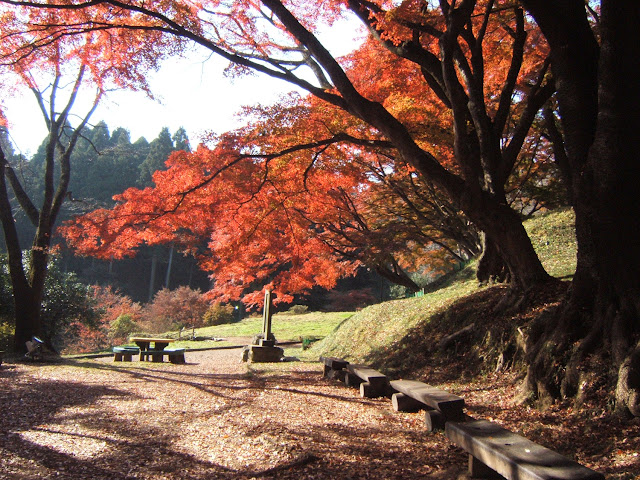The Nikko National Park has some mighty Peaks, ancient forests, elongated moorland, lakes and some of the highly visited waterfalls of the nation. It is the most visited region of Japan. The Nikko National Park has as number of spas that give way to hot mineral water and is the favorite visited spot of the tourists. The recreational competence in the national park includes the games like skiing, mount climbing, boating, fishing, skating, camping and hiking.
When you reach to this spot you must not forget to discover the scenario of the countryside of Nikko National Park. It will take your entire day to visit this national park completely. Nikko has been served as the centre for both Shinto as well as the Buddhist Mountain for worship. The place is well – known for its panorama, wild monkeys and the hiking trails. You will enjoy the complex colorful structure that features the splendid craft work of the artists of Japan in the 17th century. You will come across a famous carving: “Hear No Evil, Speak No Evil, and See No Evil”. You will surely enjoy the drive on the Zig – Zag Mountains. After you are over with your Japanese dine at a local bistro you must start for a visit to Lake Chuzenji, situated in the Nikko National Park. This lake is at the butte of the consecrated volcano mount Nantai. The lake was formed by the lavas.
The Nikko National Park is well – known for its area and the beauty of the landscape. The existence of the beautiful fall foliage is the best feature of the park. The best time to visit this place is the mid October when you can view the beautiful rusted leaves. So make sure that you explore this place at least once in your life time.
 Kootenay National Park is located in southeastern British Columbia Canada, covering 1,406 km2 (543 sq mi) in the Canadian Rockies, and forms part of a World Heritage Site. The park ranges in elevation from 918 m (3,012 ft) at the south-west park entrance, to 3,424 m (11,234 ft) at Deltaform Mountain. Kootenay forms one of the four contiguous mountain parks in the Canadian Rockies; the other three being Banff National Park directly to the east, Yoho National Park directly to the north, and Jasper National Park, which does not share a boundary with Kootenay National Park. Initially called "Kootenay Dominion Park", the park was created in 1920 as part of an agreement between the province of British Columbia and the Canadian federal government to build a highway in exchange for title (property) to a strip of land on either side of the route. A strip of land 8 km (5.0 mi) wide on each side of the newly constructed 94 km. Banff-Windermere Highway was set aside as a national park. While the park is open all year, the major tourist season lasts from June to September. Most campgrounds are open from early May to late September, while limited winter camping is available only at the Dolly Varden campground. The park takes its name from the Kootenay River, one of the two major rivers which flow through the park, the other being the Vermillion River. While the Vermillion River is completely contained within the park, the Kootenay River has its headwaters just outside of the park boundary, flowing through the park into the Rocky Mountain Trench, eventually joining the Columbia River. The Banff-Windermere Highway, #93 follows the path of both rivers through the park.
Kootenay National Park is located in southeastern British Columbia Canada, covering 1,406 km2 (543 sq mi) in the Canadian Rockies, and forms part of a World Heritage Site. The park ranges in elevation from 918 m (3,012 ft) at the south-west park entrance, to 3,424 m (11,234 ft) at Deltaform Mountain. Kootenay forms one of the four contiguous mountain parks in the Canadian Rockies; the other three being Banff National Park directly to the east, Yoho National Park directly to the north, and Jasper National Park, which does not share a boundary with Kootenay National Park. Initially called "Kootenay Dominion Park", the park was created in 1920 as part of an agreement between the province of British Columbia and the Canadian federal government to build a highway in exchange for title (property) to a strip of land on either side of the route. A strip of land 8 km (5.0 mi) wide on each side of the newly constructed 94 km. Banff-Windermere Highway was set aside as a national park. While the park is open all year, the major tourist season lasts from June to September. Most campgrounds are open from early May to late September, while limited winter camping is available only at the Dolly Varden campground. The park takes its name from the Kootenay River, one of the two major rivers which flow through the park, the other being the Vermillion River. While the Vermillion River is completely contained within the park, the Kootenay River has its headwaters just outside of the park boundary, flowing through the park into the Rocky Mountain Trench, eventually joining the Columbia River. The Banff-Windermere Highway, #93 follows the path of both rivers through the park. |































